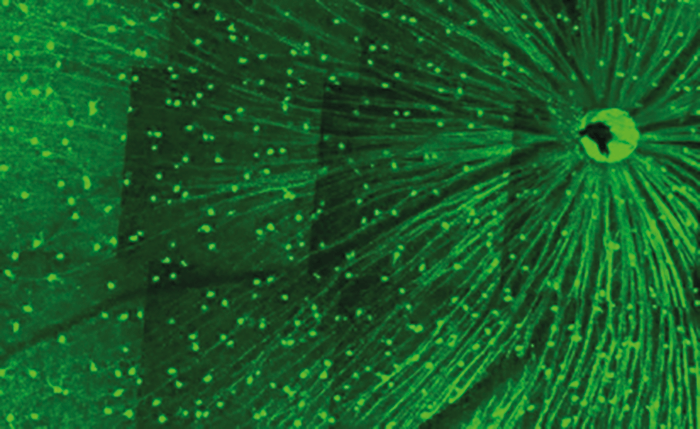
Regenerating, regrowing or replacing diseased tissues is a hot topic. And one area under particular scrutiny is neural regeneration; it is known that the peripheral nervous system can intrinsically repair itself, but the central nervous system (CNS) essentially lacks this ability. Now, recent studies on the optic nerve could bring CNS regeneration one step closer…
“Clinically, we aim to develop regenerative medicine for optic nerve injury, such as from glaucoma,” says Fengfeng Bei, of Zhigang He’s laboratory at Harvard Medical School, Boston, USA, and corresponding author on the recently published paper (1). “Scientifically, we reason that studying optic nerve regeneration may reveal more general insight into tissue repair and regeneration for brain and spinal cord injuries.” In a bid to determine which factors influence rejuvenation and growth of adult retinal ganglion cells (RGCs) forming the optic nerve, the group overexpressed seven different transcription factors in murine retinae using adeno-associated virus (AAV2) vectors. They found that overexpression of Sox11 significantly increased regeneration of RGC axons following crush injury (p<0.001 compared with control). But they were surprised to find that the transcription factor had a killing effect on the α-RGC subtype in both intact retinas and those following optic nerve crush. “The ‘double-edged’ effect of Sox11 is intriguing; no previously known pro-regenerative treatments promote cell death,” says Bei. “It completely kills α-RGCs, which are a cell type we have previously shown to be relatively resilient and responsive to other regenerative approaches” (2). In their future work, the team hopes to chart all subtypes of RGC in terms of responses to injury and pro-regenerative interventions. For now, Bei concludes that they have learnt two major lessons: “First, it is feasible to rejuvenate injured adult neurons, and second, different subsets of cells – even among a seemingly homogenous population – may respond very differently to the same regenerative approach.”
References
- MW Norsworthy et al., “Sox11 expression promotes regeneration of some retinal ganglion cell types but kills others”, Neuron, 94, 1112–1120 (2017). PMID: 28641110. X Duan et al., “Subtype-specific regeneration of retinal ganglion cells following axotomy: effects of osteopontin and mTOR signaling”, Neuron, 85, 1244–1256 (2015). PMID: 25754821.
